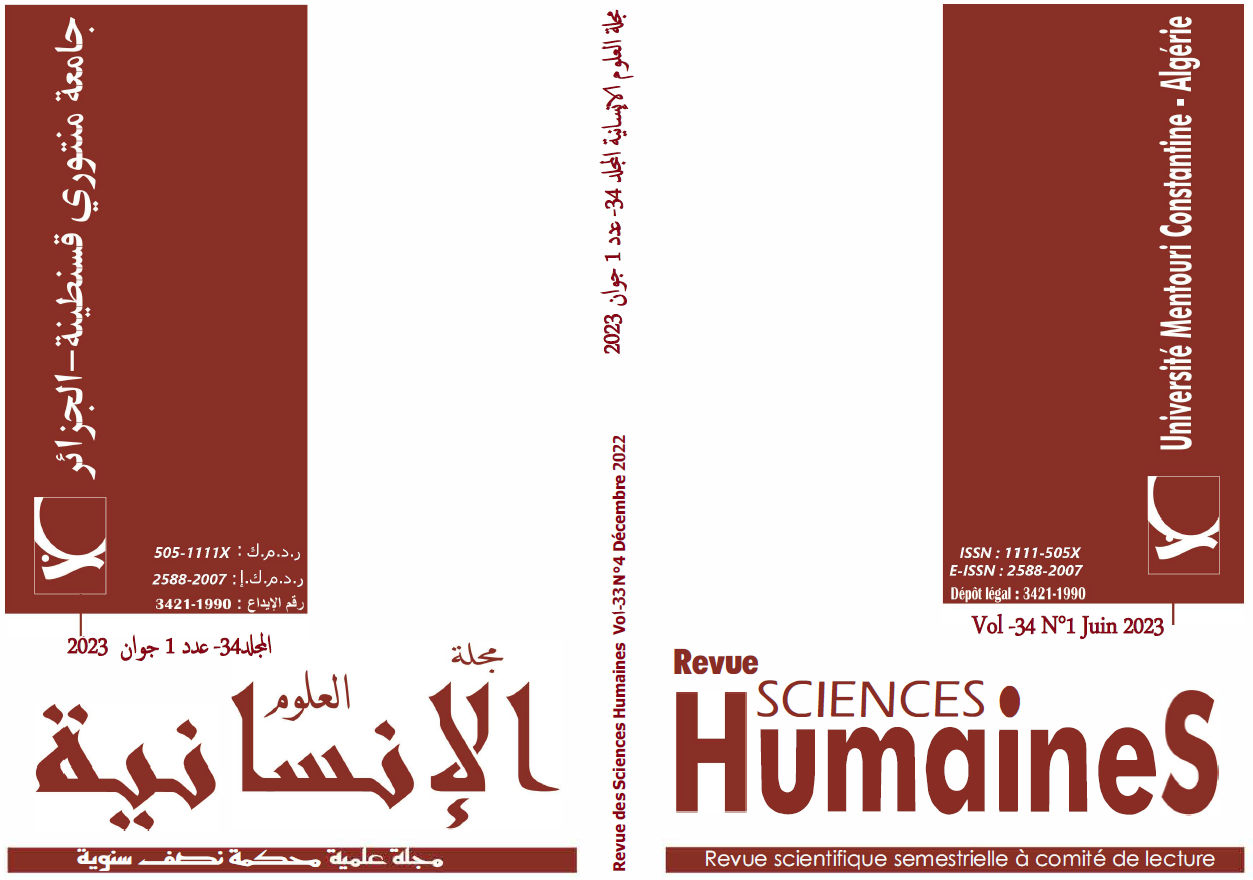Examining the Implementation of Different Test Tasks in Assessing EFL Learners’ Use of English Tenses
Keywords:
English tenses, grammar assessment, gap-filling task, multiple-choice task, grammaticality judgment taskAbstract
This study examines how different tasks assess learners’ use of English tenses. EFL teachers use test tasks such as gap-filling, multiple-choice and grammaticality judgment tasks. To check how these three types of tasks assess the uses of tenses, three tests about present, past and future tenses –each including the three tasks- are given to 29 second year EFL learners at the Teachers’ Training School Assia Djebar, Constantine, Algeria. The results reveal the highest scores are in the multiple-choice task and the lowest in the grammaticality judgement task, and that the high scores obtained in the multiple-choice task do not reflect mastery of the uses of English tenses because there is no agreement between all the scores obtained. The results show that assessment of the uses of tenses should include different task types to have a comprehensive view of learners’ knowledge of English tenses.
Downloads
References
. Andrews, S. (2007). Teacher language awareness. Cambridge, UK: Cambridge University Press.
. Broughton, G., Brumfit, C., Flavell, R., Hill, P., & Pincas, A. (1980). Teaching English as a foreign language (2nd ed.). New York: Routledge.
. Canale, M. A. & Swain, M. (1980). Theoretical bases of communicative approaches of second language teaching and testing. Applied Linguistics (1). pp 1-47.
. Comrie, B. (1985). Tense. Cambridge: CUP.
. Cowan, R. (2008). The teacher’s grammar of English. Cambridge: CUP.
. Ellis, R. (1995). Interpretation tasks for grammar teaching. TESOL Quarterly 29(1), 87-105.
. Ellis, R. (2004) The definition and measurement of explicit knowledge. Language Learning 54, 227-275.
. Ellis, R. (2006). Current issues in the teaching of grammar: An SLA perspective. TESOL Quarterly 40(1), 83-107.
. Ellis, R. (2009). Implicit and explicit learning, knowledge and instruction. In R. Ellis, S. Loewen, C. Elder, R. Erlam, J. Philp and H. Reinders (Eds.) Implicit and Explicit Knowledge in Second Language Learning, Testing and Teaching (pp. 3-26). Bristol, UK: Multilingual Matters.
. Gebhard, M. & Martin, J. R. (2011). Grammar and literacy learning. In Diane Lapp and Douglas Fisher (Eds.), Handbook of research on teaching English language arts (3rd Edition), pp.297-304. NY: Routledge.
. Hinkel, E & Fotos, S. (2002). From theory to practice: A teacher’s view. In E. Hinkel and S. Fotos (Eds.), New Perspectives on Grammar Teaching Second Language Classrooms (1-12). Mahwah, NJ: Lawrence Erlbaum Associates.
. Kennedy, G. (2003). Structure and meaning in English: A guide for teachers. Harlow, England: Pearson Education Limited.
. Klapper, J. (2005). Teaching Grammar. In J. A. Coleman, & J. Klapper (Eds.), Effective Learning and Teaching in Modern Languages (pp. 67-74). Abingdon, Oxon, UK: Routledge.
. Klein, S. (2003). Language and Diversity. In Irene L. Clark (Ed.), Concepts in composition: theory and practice in the teaching of writing (pp. 413-480). Mahwah, New Jersey: Lawrence Erlbaum Associates.
. Krashen, S. D. (1982). Principles and practice in second language acquisition (First Internet ed.). Pergamon Press Inc.
. Larsen-Freeman, D. (2009). Teaching and testing grammar. In M. H. Long & C. J. Doughty, The Handbook of Language Teaching (pp. 518-542). Oxford, UK: Wiley-Blackwell.
. Loewen, S. (2009). Grammaticality judgement tests and the measurement of implicit and explicit L2 knowledge. In R. Ellis, S. Loewen, C. Elder, R. Erlam, J. Philp and H. Reinders (Eds.) Implicit and Explicit Knowledge in Second Language Learning, Testing and Teaching (pp. 94-112). Bristol, UK: Multilingual Matters.
. McKay, P. (2006). Assessing young language learners. Cambridge, UK: Cambridge University Press.
. Nilson, L. B. (2010). Teaching at its best: a research-based resource for college instructors (3rd Ed.). San Fransicso, CA: Jossey-Bass.
. Oller, J. W. Jr. & Jonz, J. (1994). Why cloze procure. In Oller and Jonz (Eds.), Cloze and Coherence, pp.1-20. Cranbury, NJ: Bucknell University Press.
. Pachler, N & Field, K. (2001). Learning to teach modern foreign languages in the secondary school: A companion to school experience. London: Routledge Falmer.
. Pierce, L. V. (2002). Performance-based assessment: Promoting achievement for English language learners. ERIC/CLL News Bulletin, 26(1), 2–7.
. Purpura, J. (2004). Assessing Grammar. Cambridge, UK: Cambridge University Press.
. Richards, J. C. & Reppen, R. (2014). Towards a pedagogy of grammar instruction. RELC Journal45(1), 5-25.
. Richards, J. C. & Schmidt, R. (2010). Longman Dictionary of Language Teaching & Applied Linguistics (4th Edition). Harlow, England: Pearson Education Limited.
. Richards, J. C. (2006). Communicative language teaching today. New York: Cambridge University Press.
. Taylor, J. R. (2008). Some pedagogical implications of cognitive linguistics. In S. De Knop and T. De Rycker (Eds.), Cognitive Approaches to Pedagogical Grammar (pp.37-65). Berlin, Germany: Mouton De Gruyter.
Downloads
Published
Issue
Section
License
Copyright (c) 2023 Human Sciences Journal

This work is licensed under a Creative Commons Attribution-NonCommercial-NoDerivatives 4.0 International License.












